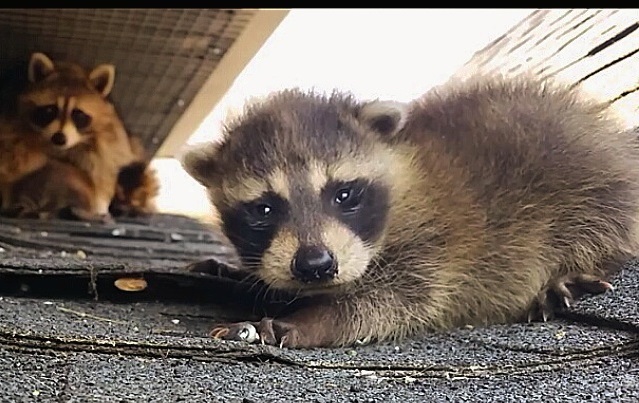Spring is the time of year when the world starts waking up again, at least in temperate climates like ours. The snow melts, the grasses turn green and the rivers swell. Trees and flowers start to bloom adding color to the landscape. Animal life is suddenly abundant as birds return from warmer climates and snoozing mammals crawl out of their dens.
Raccoons are among those that you might see more frequently when the temperatures begin to warm up, but they don’t hibernate. Why are they suddenly more active, and why might they end up in your attic? Let’s run down a list of some ways that raccoons become more active in the spring. If you do discover a raccoon has moved in, make sure you contact experts in humane raccoon removal Madison.
A Winter’s Tale
Raccoons do not hibernate during the winter, but they do sleep a lot. They enter a state called torpor, which is similar to hibernation. While sleeping, their body temperatures lower, and their metabolism and heart rates slow down. They sleep for long periods of time to conserve energy, primarily surviving off of the fat they stored up over the fall.
Raccoons don’t stay asleep all winter, though. When the temperatures are warm enough, they’ll wander out in search of food. You’re more likely to see them out during the daytime in winter than in summer because it is often too cold at night to leave the den. As spring rolls around, they move out of torpor. In harsher winters, they wake up really hungry and may spend more time on the hunt for sustenance to replenish what they burned off while sleeping.
A Spring Fling
Male raccoons leave their sleeping quarters for more than food. Breeding season may begin as early as January but typically starts sometime in February. When the temperatures are warm enough, the male heads off in search of an available female. He’ll crawl into her den and hang around for a while — sometimes for as long as a couple of weeks — during which time the pair mates.
When the male decides it’s time to move on, the female goes back to napping. Raccoons are not pair-bonded, so the male does not stick around for the birthing of the little ones. The breeding season lasts through March. Both the males and the females have multiple spring flings over the course of those three months.
A Nesting Place
Females that become pregnant may begin to look for a suitable den for rearing their kits. The first litters are typically born in April. They raise their little ones by themselves and must leave them often to go in search of food. Though raccoons are nocturnal, keeping up with feeding hungry babies often requires daytime foraging and hunting, which leaves the kits more vulnerable to predators. The perfect nesting place is one that is well-hidden, dry and comfortable.
Attics make particularly good dens for birthing and raising kits. Spring is a time for homeowners to remain vigilant to signs of life in the upper level of their homes. Once raccoons move into your house, they can do a significant amount of damage. They are also common carriers of rabies, along with other diseases that can make people and pets sick. For your safety and theirs, we do not recommend attempting removal on your own.
The Professionals You Can Trust
When animals find a way into your house, you need to enlist the help of our raccoon removal Madison experts. We understand raccoon biology and behavior and have the skills and training required for safe and humane removal. Skedaddle uses baby boxes for the safe removal of any kits on the premises, and they are all reunited with their mother in a more suitable denning location. Contact Skedaddle today to schedule services.



